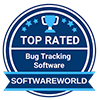Example: Create a New Workflow
- 2024-09-11 14:00:17
- Kelsea
- 298
- Last edited by Hongyan on 2024-09-11 14:00:17
- Share links
The workflow function in ZenTao Biz allows for customization and expansion of built-in processes, as well as enables to create a totally new workflow.
This document primarily explains how to create a new workflow.
Before we dive into details, let’s briefly outline the steps to create a new workflow:
- Organize the requirements for the new workflow.
- Create the new workflow based on the requirements and add fields.
- Add corresponding actions based on status transitions and set up the action interface.
- Configure the trigger conditions, data validation, extended actions, and notifications based on permissions.
- Add corresponding tags as per permission requirements.
- Control permissions under Admin > User > Privilege.
Let’s take the example of adding a new workflow for reserving meeting rooms to illustrate the process in detail.
1: Organize Workflow Requirements
First, we need to gather the requirements for the new workflow based on actual usage needs. This includes fields, actions, whether to create sub-processes, whether to add data sources, and permission settings.
For the meeting room reservation example, we need to create a main workflow for reserving meeting rooms and a sub-process for managing the rooms themselves.
Main Workflow: Reserve Meeting Room
- Fields: ID, Meeting Room, Start Time, End Time, Reserved By, Description, Parent Process ID, Created By, Creation Date, Edited By, Editing Date, Delete.
- Actions: Reserve, Edit, Details, Browse List, Delete.
- Data Validation: When a user submits a reservation, if the room is already booked, the system should prompt the user that the room is unavailable during that time.
- Tags: All Reservations, My Reservations.
- Permissions: Set according to actions and tags.
Sub-Process: Meeting Room
- Fields: ID, Name, Location, Capacity, Equipment, Open Hours, Parent Process ID, Created By, Creation Date, Edited By, Editing Date, Is Deleted.
- Actions: Create, Edit, Details, Browse List, Delete.
- Tags: All Meeting Rooms, First Floor Rooms, Second Floor Rooms, Third Floor Rooms.
- Data Sources: Meeting room equipment such as computers, audio systems, microphones, projectors, and whiteboards. Open hours include Monday through Sunday.
- Permissions: Set according to actions and tags.
2: Create a New Workflow and Add Fields
Once the requirements for the meeting room reservation workflow are organized, we can start creating the new workflow and adding fields.
2.1. Create the Meeting Room Reservation Workflow
Click on the "Create Workflow" button located at the top right to begin creating our reservation workflow.
Enter the workflow editor:
It's recommended to jump to the Advanced Editor directly.
2.2: Add Fields
After creating the workflow, the system will automatically add some default fields. You can edit or modify these as needed.
You can add any missing fields based on the requirements we designed above.
For example, to add the "Meeting Room" field, click on the "Create Field" button.
Same way, you can design and add the remaining fields as necessary, setting the controls and validation rules as needed.
4: Add Corresponding Actions and Set Action Interfaces
Now that we have added fields for the Meeting Room Reservation, we can proceed to add actions.
4.1. Add Actions
This is the default action list in the workflow. Modify it according to your requirements or add new actions.
Modified actions for the Meeting Room Reservation:
Support
- Book a Demo
- Tech Forum
- GitHub
- SourceForge
About Us
- Company
- Privacy Policy
- Term of Use
- Blogs
- Partners
Contact Us
- Leave a Message
- Email Us: support@zentao.pm














